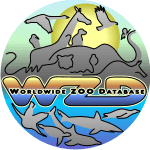| |
|
|
| |
History of the Pheasantry |
|
| |
 A pheasantry, in simple words, is a facility where pheasants are kept
and bred. For conservation organization, there are always clear cut
objectives to keep and extend such type of facilities. Pheasantry and
other Ex-situ conservation facilities are the only option when
endangered bird or animal species are fighting for survival in the wild
due to habitat disturbances and other similar anomalies. Since,
pheasants are the most beautiful and colourful birds, therefore, they
are more prone to hunting and predation. Mansehra Wildlife Division has
been given the opportunities to establish and maintain a pheasantry for
conservation education, research, stocking and reintroduction.
A pheasantry, in simple words, is a facility where pheasants are kept
and bred. For conservation organization, there are always clear cut
objectives to keep and extend such type of facilities. Pheasantry and
other Ex-situ conservation facilities are the only option when
endangered bird or animal species are fighting for survival in the wild
due to habitat disturbances and other similar anomalies. Since,
pheasants are the most beautiful and colourful birds, therefore, they
are more prone to hunting and predation. Mansehra Wildlife Division has
been given the opportunities to establish and maintain a pheasantry for
conservation education, research, stocking and reintroduction.
Located on the Karakoram
Highway, Dhodial Pheasantry was established in 1984 and is spread over
an area of about 12.5 acres at Dhodial in district Mansehra. Primarily
the pheasantry was established to get an experience of breeding ring
necked pheasant and other exotic species for general public and other
aviculturist. On the basis of the successful trial during 1980’s, eggs
and wild pairs of indigenous species were also collected to breed and
rare them in this pheasantry. Side by side, other available species of
pheasants from all over the world are being collected and introduced in
this pheasantry for breeding. Chronological developments of Dhodial
Pheasantry are as follows:
• Dhodial Pheasantry was established in 1984 with the objective of
raising local and exotic species in captivity. Cages were built on 1.6
ha of land initially and Ring-necked Pheasants along with wild captive
Koklass and Monal Pheasants were kept for breeding.
• This project developed tremendously over time and this Pheasantry is
claimed to be as Asia‘s largest facility for pheasants.
• The objectives of the Pheasantry were also expanded from
reintroduction and restocking to education and research awareness to get
the support of different sections of the public.
• At present, 38 pheasant species out of 52 are housed in Dhodial
Pheasantry, which are collected from throughout world.
• After necessary trials of raising ring-necked pheasants in captivity
during 1984-85, the Khyber Pakhtunkhwa Wildlife Department emphasized
raising indigenous pheasant species. The main problem was acquiring a
parent flock of these indigenous species to raise in captivity.
• Some eggs of Cheer Pheasants were transported from England with the
help of the World Pheasant Association (WPA) and were hatched in the
Pheasantry, but their survival rate was not sufficient to establish them
as a breeding population until 1998.
• The Khyber Pakhtunkhwa Wildlife Department tried to collect wild
captive birds and eggs of Koklass, Monal, and Kalij Pheasants from
1999-2005, but these wild captive birds did not adjust to the captive
environment; every year 90% of these birds died due to stress and other
reasons The ―Westrage-2000‖ project tried to trap Western Horned
Tragopan from Palas valley in 2001-2002, but these efforts were not
successful due to the elusive nature of the species and technical flaws
in trapping.
• A project was prepared in 2003 and submitted to the Government of NWFP
for purchase of indigenous and exotic species to breed in Dhodial
Pheasantry. Through this project a few breeding pairs of Himalayan Monal
and white crested Kalij were procured and placed for breeding at Dhodial
Pheasantry.
• The staff of Dhodial Pheasantry deserves the credit for successfully
raising Cheer Pheasants in captivity and is in a position to launch
their mass scale reintroduction in suitable habitat of the province .
Source: official site of
Dhodial
Pheasantry (2012)
|
|
|
|
|

